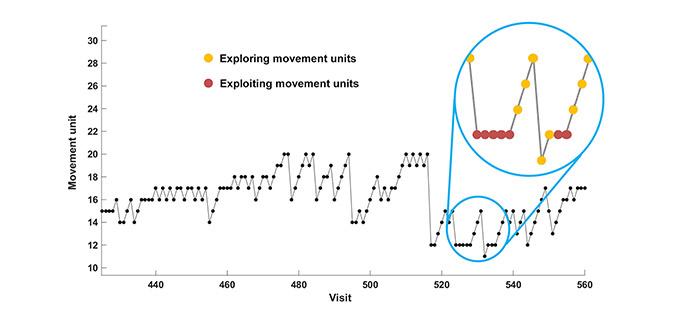Behavioural Quantitative Analysis of Choreographic Decision-Making
Human creativity finds in artistic practices one of its most admirable forms. However, very few studies have placed the emphasis on quantitatively characterizing the decision-making processes of a choreographer throughout the creation process, specifically while choosing to invest more or less effort in given elements of their art piece.
We took the unique opportunity of working with Rui Lopes Graça to develop a quantitative methodology that characterized his behavioural patterns while working in the studio individually with dancers, during the compositional creative process of the dance piece “15 Bailarinos e Tempo Incerto".
We focused our analysis on the movement phrases generated by two dancers: Myiu Matsui and Kilian Souc, while being directed by Rui Lopes Graça. The evolution of the movement phrases was considered an implicit trace of the choreographer’s choices. We have assumed that the choreographer is a decision-maker, deciding on which patterns he wishes to see enacted, by instructing the dancer either to perform repetitions of a same movement phrase, or to perform other movement phrases different from the previous ones.
We have then framed and quantified this decision-making problem as a foraging problem (which has been developed from a wide range of animal behaviours, within the wider perspective of animal cognition research), where the choreographer decides whether to exploit a given movement unit or to explore new movement units, creating a “search path” throughout the rehearsal process.
We have video recorded the creation of the dance piece. We hand-scored, using ELAN, each movement phrase elicited by each dancer into movement units (MU), according to its order of introduction into the creative process. Each MU was implicitly characterized by the following attributes: an initial body position; salient features of the body trajectory that were consistently repeated; and a final body position.

Sample of one of the choreographer’s “search path”. We quantitatively reconstructed a timeline of the movement sequence building process by the choreographer, while creating the dance piece, which we further dissected and quantitatively analysed. This representation has revealed a structural layer of the creative process, implicitly showing for instance, that Rui Lopes Graça has invested more time working in short movement sequences, even though certain elements of movement seem to be particularly important and worth a great investment.



